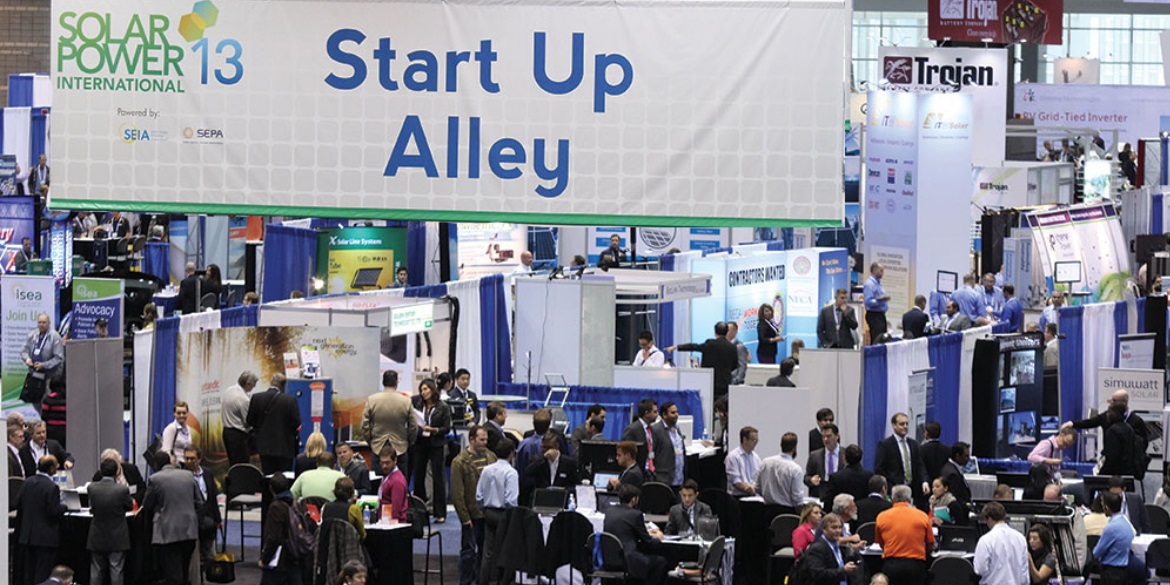Each year, Solar Power International (SPI) gives us the opportunity to take stock of the U.S. solar industry. This year’s event, held in Chicago Oct. 21-24, was no different. The 2013 version of “North America’s premier business-to-business event for professionals in solar energy and related fields” was a far cry from the tiny event I exhibited at in 2004 in San Francisco. Like the industry, SPI has grown and matured.
Two weeks of reflection gave me a chance to take a step back and think about what the show tells us about how our industry is evolving. Three trends stood out, and they all seem to be healthy signs of a maturing industry.
1. Return of substance over flash
Double-decker booths were mostly gone. Free food and trinkets were slim pickings. Promotional models (I mean promotional human models) were rarely sighted. Instead, the show was focused on solar products and services.
Everywhere, knowledgeable people were talking substantively about their offerings. Product literature was front and center, and demonstrations were thoughtful and informative. Large crowds attended analyst sessions and poster discussions held on the show floor. Importantly, the audience was serious about solar. We were busy giving software demonstrations in our booth at any given time.
2. The solar industry and utilities making peace
Maybe it’s too early to say there is peace between the solar industry and utilities, but there are certainly signs they are finding ways to comfortably co-exist. I heard no crazed solar industry speaker declare utilities to be enemy number one, or predict their imminent demise. Nor did I hear utility speakers talk of “death spirals,” and the need to slow or stop distributed generation.
The comedy group Second City broke the ice with a popular opening-night sketch that parodied the different viewpoints of the solar industry and utilities. That theme carried on throughout SPI. One of the best events of the show was the Solar Electric Power Association’s (SEPA’s) Annual Membership and Utility Awards Luncheon. This year, utility and industry members chatted about how they could work together, while SEPA President and CEO Julia Hamm and team gave awards to utility solar stars.
3. Increased specialization and innovation
Finally, the show was characterized by increased specialization and abundant innovation. I saw very few companies trying to simultaneously be all things to all people. Instead, most were touting their core product, be it modules, inverters, monitoring, racking or software. Even within these product lines, specialization driven by technology advancements seemed to be increasing.
Innovation was also highlighted in Start-up Alley, a new SPI floor feature that gives small companies a chance to show-off and vet their innovations to a captive audience. The winner of the Start-Up Alley Challenge, GreenLancer.com, offers a web-based engineering solution that is aimed at reducing soft costs, a hot topic in the industry. The Department of Energy also announced $60 million in awards to companies innovating in the areas of soft cost reduction, PV efficiency and grid integration improvements, and education and training programs.
Perhaps industries mature like people. They go through an infant phase. SPI in 2004 was certainly reflective of an industry in its infancy. Then they go through a wild and rebellious phase. The excesses at SPI over the past several years certainly represented this well. Then perhaps they grow a little older, a little more comfortable with who they are, and they focus on the real work of building and growing.
I think SPI 2013 showed a real maturing of the U.S. solar industry. We are all settling down and working together to bring abundant solar power to the U.S. As Rhone Resch, president and CEO of the Solar Energy Industries Association (SEIA) said during SPI’s opening session, “Welcome to the big leagues.”
